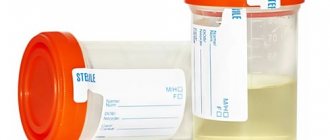Nephroptosis is pathological mobility of the kidney. In this case, the kidney moves to an unusual place, as a rule, it drops lower than it should be. Kidney prolapse, which is how the word “nephroptosis” is literally translated, occurs frequently, according to various sources, from 0.1% to 11%. Normally, the kidneys can move within 1-2 cm, but their function is not impaired, and no action is required to return the kidney to its original state.
Most often this condition is unilateral (up to 90% of all cases), much less often it is bilateral. Prolapse of the right kidney is much more common than the left one. This happens because the ligamentous apparatus of the left kidney is anatomically much stronger. But the symptoms and possible complications are the same, whether it is prolapse on the right or on the left.
Among women, the prevalence of nephroptosis is about 1.5-2%, among men up to 0.1%. This is explained by the fact that women have a different hormonal background (the female hormone progesterone can make the ligaments looser), a wider pelvis, women carry a pregnancy and give birth.
It happens that people are born with this position of the kidneys, which means that the supporting apparatus of the kidney is weak, the ligaments are relatively long, and the physique is asthenic (children are thin and usually tall for their age). Premature babies are more likely to suffer from nephroptosis than those born at term.
But more often this condition manifests itself in those who have been exposed to provoking factors.
Factors that provoke or aggravate kidney prolapse
Sudden change in body weight
Both weight loss and rapid weight gain can lead to problems with the position of the kidneys. In most cases, we are talking about a sharp weight loss in teenage girls, which has psychological reasons (comparison to model standards and complexes based on appearance).
Losing weight in a short period of time leads to a lot of problems, including displacement of internal organs. When rapid weight loss occurs, not only the fat layer from the hips or abdomen is lost, but also internal (visceral) fat, which serves as a kind of “pillow” for organs. If it is unexpectedly removed, the organs “sag” on the ligaments, the ligaments are stretched, and prolapse occurs. The kidneys (nephroptosis), stomach (gastroptosis) and intestines (enteroptosis, colonoptosis) usually suffer the most.
The kidneys can also not only descend, but rotate around their axis. This increases patient complaints and increases complications.
Weight gain, even to the point of obesity, in a short period of time also stretches and weakens the ligamentous apparatus of the kidneys. And if a person begins to lose weight sharply, then weight loss is almost inevitable. All weight fluctuations should be slow and not exceed 3-5 kg (except during pregnancy).
Sports activities
We are not talking about everyday exercise or running in the morning, but about weightlifting, barbells and other active loads. If the body constantly experiences high tension, then the ligaments weaken and prolapse of the internal organs occurs in the same way as in the previous case.
Pregnancy and childbirth
Pregnancy is a period of increased stress on the body, especially if a woman is carrying twins or triplets. Ligaments and abdominal muscles are stretched, and then after childbirth the load decreases sharply. Pressure in the abdominal cavity decreases and the kidneys may drop below normal levels.
The more pregnancies a woman has in her life, the greater the risk of kidney prolapse.
Polyhydramnios and excessive weight gain are also risk factors. Polyhydramnios is a condition when too much amniotic fluid forms in the uterine cavity, the uterus stretches more than it should and compresses and displaces the kidneys, intestines, stomach, and even prevents the lungs from fully expanding.
Excessive weight gain is exceeding the conventional limit of 10-14 kg, taking into account the woman’s initial weight before pregnancy.
Injuries to the lumbar region and abdominal injuries
Both blunt and penetrating injuries can have long-term consequences in the form of ligament injuries. The more serious the injury, the greater the risk of consequences in the form of renal dysfunction and the formation of adhesions.
Congenital causes
Congenital weakness of connective tissue occurs; in this condition, all ligaments, joints and partly muscles are more loose and extensible than normal. In this case, nephroptosis is often combined with low vision (myopia), heart defects (patent foramen ovale) and joint hypermobility (when the joints are very flexible).
Also, the location of the kidneys may suffer if the child is missing several ribs on any side from birth, has a curvature of the spine or anomalies in the location of other organs.
Causes
There are a sufficient number of predispositions to kidney prolapse, but the main ones are:
- weight loss, which involves reducing the total volume of the fat capsule in this process;
- genetic inheritance to strong and excessive stretching of connective tissues;
- possible spinal injuries with bruising;
- excessive lifting of weights;
- ailments of the kidney structures associated with infection;
- stretching of muscle fibers in the abdominal wall during pregnancy.
There are several reasons for kidney prolapse.
The greatest likelihood of nephroptosis occurs in people with an asthenic body type, as well as insufficient tone of the muscle fibers in the abdominal wall.
Stages (degrees) of omission
The stage of nephroptosis is determined depending on the level of the kidney in a standing position.
Stage 1:
prolapse of the kidney can only be detected when inhaling, in a standing position, in thin people. As you exhale and while lying down, the kidney returns to its place. With nephroptosis of the 1st degree, a prolapse of no more than 1.5-2 vertebrae down is determined.
When palpating the abdomen, the doctor feels the lower edge of the kidney. The final diagnosis at this stage can be made by ultrasound. In this case, it is correct to look at the position of the kidneys both lying down and standing, and calculate the difference in positions. According to urine tests, it may be normal, or initial minor deviations. This is the most common degree of nephroptosis.
Stage 2:
prolapse can be detected in a lying or standing position; prolapse of the kidney reaches the level of 2-3 vertebrae. On exhalation, the kidney does not completely “hide” into its place in the hypochondrium; in a lying position, it can completely return to its place. If the kidney in a supine position does not return to its normal position, but it can be easily adjusted by hand (as if pushed up), then this refers to the second stage of nephroptosis.
During examination, you can palpate the kidney without additional methods. Ultrasound usually clearly shows the difference in the position of the kidneys if nephroptosis is unilateral. Kidney ultrasound should also be performed both lying down and standing.
In urine tests, protein, leukocytes (less often) and red blood cells (often, especially if there was physical activity the day before) appear. The urine becomes cloudy and may have an unusual, pungent odor.
Stage 3:
the kidney is lowered by more than 3 vertebrae, sometimes you can find it in the pelvis. The kidney is mobile and can “wander,” that is, shift depending on body position, movements, physical activity, inhalation and exhalation. Depending on the position of the body, the kidney/kidneys may be at different levels, but they no longer return to the anatomically correct place, no matter what actions (inhalation-exhalation, manual adjustment, position on the side or lying down).
The doctor, by palpating the abdomen and lower back, can find a kidney in the navel area and below. Usually the kidney is easily dislodged by hand, but then returns to where it was. Such an examination at stage 3 can be unpleasant, and the nagging pain intensifies. Ultrasound accurately determines the dislocation of the kidney and how much its structure has changed, whether there are signs of hydronephrosis (swelling of the kidney), pyelonephritis (inflammation of the kidney) or pyelectasia (enlargement of the renal pelvis - the entrance to the kidney).
Our services
The administration of CELT JSC regularly updates the price list posted on the clinic’s website. However, in order to avoid possible misunderstandings, we ask you to clarify the cost of services by phone: +7
| Service name | Price in rubles |
| Ultrasound of the kidneys and adrenal glands | 2 700 |
| Urography intravenous | 6 000 |
| Laparoscopic nephropexy | 100 000 — 135 000 |
All services
Make an appointment through the application or by calling +7 +7 We work every day:
- Monday—Friday: 8.00—20.00
- Saturday: 8.00–18.00
- Sunday is a day off
The nearest metro and MCC stations to the clinic:
- Highway of Enthusiasts or Perovo
- Partisan
- Enthusiast Highway
Driving directions
Symptoms of nephroptosis
Symptoms of kidney prolapse depend on the stage; the larger it is, the more complaints the patient will have. At the first stage, there are usually no complaints or they are minor and temporary and go away on their own.
Lower back pain
The pain is caused by tension and torsion of the ligaments that support the kidneys; in case of complications, by the inflammatory process and swelling of the kidney itself.
- The pain most often has a pulling, dull, aching character.
- The pain will not be acute, does not occur suddenly, it lasts for a long time and intensifies with physical activity, lifting weights and standing.
- In these cases, the pain may intensify to paroxysmal pain. An attack of pain is called renal colic, in which the patient is restless, cannot find a comfortable body position, there is cold sweat, vomiting at the height of pain and an attack of anxiety and panic. The heart rate is rapid, blood pressure can either fall or jump sharply.
- Emergency doctors often say that a patient with renal colic rushes into the hospital faster than the doctors. And it’s true, pain does not allow a person to sit still.
- Also, the pain gradually progresses over time.
When the disease lasts for a long time without treatment, pain becomes a constant companion of a person, exhausting him, disrupting his appetite and normal activities. It becomes impossible to sit or stand for a long time without changing position, and some professions require this. Patients complain that it is difficult to fall asleep without adopting a particularly comfortable body position. Increased pain may occur even after coughing or sneezing.
Often the pain can radiate to the perineum, which disrupts sex life and natural bowel movements (going to the toilet can be painful, bowel movements are disrupted, and causeless diarrhea is bothersome).
General symptoms
Typically, these symptoms occur during a long-term illness, when pain has debilitated a person for years:
- weakness,
- malaise,
- decreased performance,
- increased thirst.
Changes in urine tests
Protein (up to high numbers), signs of inflammation (leukocytes, epithelium, turbidity and acidity of urine) and red blood cells (blood) are detected in the urine.
The danger posed by the pathological process
Prolapse of the urinary organ can serve as a springboard for the development of very dangerous complications, manifested in the form of inflammation of the organ parenchyma, urolithiasis and enlargement of the kidney. What danger does nephroptosis pose for humans? The main pathological changes that may threaten kidney prolapse are:
- A complete disruption of urine excretion, which contributes to the emergence of an infectious process and the formation of stones in the future.
- In the female half of the population, nephroptosis can cause miscarriage.
- With strong progress of the disease, a rise in blood pressure occurs, which threatens further strokes in the brain and heart attacks of the heart muscle.
- A wandering kidney causes disability in 20% of patients. With timely diagnosis and adequately prescribed treatment, the prognosis of the disease is very positive.
In women, nephroptosis can cause miscarriage
Complications of nephroptosis
- Pyelonephritis
Pyelonephritis is an inflammation of the kidney tissue. Nephroptosis promotes the development of infection because the ureters and kidney vessels are stretched, can become kinked, and urine does not move in the right direction. Urine stagnation and/or backflow into the kidney may occur. Pyelonephritis against the background of nephroptosis develops many times more often, and is more difficult to treat, since a provoking factor is always present.
- Hydronephrosis
Hydronephrosis is the accumulation of urine in the renal pelvis. The pelvis is the vestibule of the kidney, a kind of reservoir. Normally, urine is filtered in the kidney, then flows into the pelvis, and from there into the ureter and bladder. With nephroptosis stages 2 and 3, the kidney is strongly displaced and the ureters are bent, urine cannot “squeeze” from the pelvis into the ureter, accumulates and gradually expands the pelvis (pyelectasia). Then, if the outflow is not restored, the dilated pelvis gradually pushes aside the kidney tissue and it begins to lose its functions.
- Secondary arterial hypertension
In addition to the formation of urine, the kidneys produce many active substances. Including substances that regulate blood pressure. With a long course of many kidney diseases (glomerulonephritis, pyelonephritis, nephroptosis and others), arterial hypertension develops. Renal hypertension is less treatable and is characterized by high numbers and mild symptoms. A person does not always feel that he has pressure. When measuring blood pressure, high numbers of “lower blood pressure” attract attention. For example, 150/120 mmHg, 200/150 mmHg.
Forecast
Nephroptosis is a disease whose outcome is usually favorable if all medical recommendations are strictly followed. Nephropexy, carried out on time, guarantees the disappearance of pain and rapid normalization of blood pressure. Late treatment, on the contrary, is fraught with chronic diseases - hydronephrosis, pyelonephritis.
If a person constantly works to strengthen his abdominal muscles, this dangerous condition will not return. You need to avoid trauma to the kidneys, heavy physical activity, and sudden weight loss. During pregnancy, wearing a bandage is recommended. Timely consultation with a doctor at the slightest symptoms will reduce the risk of relapse.
Treatment of kidney prolapse
Diet for kidney disease plays a very important role in treatment. The purpose of a special nutritional system is not to provoke unnecessary stress on these organs, but at the same time provide the body with enough fluid and nutrients. Properly selected therapeutic nutrition can significantly improve the state of blood flow and metabolism in the kidneys, reduce the number of pills taken and avoid the development of kidney failure.
In the 30s of the 20th century, a well-known gastroenterologist and nutritionist in the USSR, Manuil Isaakovich Pevzner, proposed dividing medical nutrition into “tables”. Each table had a number and was intended for certain diseases. For example, table No. 9 is for diabetics, and table No. 5 is for patients with hepatitis and cholelithiasis. Table No. 7 has been developed for patients with kidney diseases. These recommendations have not lost their relevance to this day.
Nutritional Features
- Limiting protein foods
This is necessary because the breakdown of protein produces nitrogenous wastes (creatinine and urea), which are excreted by the kidneys. The more protein, the more intensely they have to work. Popular systems of “drying” the body are a colossal stress for the kidneys and liver; they can provoke disease even against a healthy background. If we are talking about people with nephroptosis (even stage 1), then such dubious experiments are strictly contraindicated.
Patients are strictly limited to meat, dairy products, fatty fish and seafood, and eggs. You cannot completely exclude protein foods; this will deprive the body of building material. The amount of protein is calculated individually depending on the stage of the disease. If we are talking about nephroptosis, which is detected for the first time and no abnormalities are detected in tests or ultrasound, then the recommended amount of protein is 60-80 grams per day.
- Limiting table salt
Salt is a sodium compound that causes fluid retention and swelling. Salts are also excreted through the kidneys, so the more salt, the greater the load. If asymptomatic nephroptosis is detected, salt is limited to 5-8 grams per day. If a complication occurs (pyelonephritis, hydronephrosis), then salt is completely excluded for a while. Instead, food is seasoned with lemon juice; you can also use cinnamon, cumin, dried or fresh dill. Then, when the condition has stabilized, food is allowed to be added, but the total amount of salt per day is allowed from 1.5 to 5 grams. You can roughly calculate how much salt we consume per day if you prepare dishes without using salt. The finished dish should be salted in a plate.
Products that initially contain a large amount of salt are excluded: smoked meats, canned food, processed cheese, sausage, olives and homemade pickles.
- Sufficient consumption of vegetable oils
Animal fats (butter, lard, lard) are difficult for the body to digest, so the necessary fats should be obtained primarily from vegetable oils (sunflower, olive, flaxseed, pumpkin, mustard). In addition, vegetable oils contain a large amount of vitamins.
- Limit spicy foods
Onions, garlic, pepper, horseradish, mustard and vinegar change the acidity of urine and increase the chemical effect on the kidneys. This can aggravate lower back pain and cause stone formation. These products can be consumed from time to time, but remember to use moderation. Asian cuisine often contains many of the listed components “in one bottle”, so this diet is not suitable for patients with kidney disease.
- Fluid restriction
the liquid per day should be in the range of 0.8 - 1 liter, this includes water in the base of soups and porridges, fruits, and juicy vegetables. This amount is enough so that the body does not experience dehydration, but does not allow water overload and does not force the kidneys to work in increased mode. If we are talking about hot summer time, then it is important not only to drink in moderation, but also not to provoke thirst. If you eat salty, too sweet and dry foods, you will drink much more water than you actually need. Dry food is unseasoned cottage cheese, boiled eggs, crackers and the like. This problem can be easily solved if you eat these foods with sauces or vegetables and fruits.
- Cooking food
You can stew dishes, cook them in a slow cooker, steam them, bake them, or simply boil them. It is advisable to exclude fried foods, since frying produces substances that are difficult to break down and carcinogens.
- enrich food with B vitamins and vitamin C, limit vitamin A
- restriction of phosphorus to prevent osteoporosis (pathological fragility of bones), since increased phosphorus content contributes to the leaching of calcium. To do this, exclude from food: peas and beans, peanuts and peanut butter, ice cream, cheese, yogurt, milk and carbonated drinks.
- meals at least 5 times a day, slowly, chewing food thoroughly
- food portions per meal should be approximately the size of the patient’s fist
What can you eat if you have nephroptosis?
- flour products without salt and margarine (bread, cookies, pies with fruit fillings and cabbage),
- river fish,
- boiled and baked lean meat,
- dairy products (except cheese),
- steamed and baked omelettes,
- vegetables and fruits,
- cereals,
- pasta,
- vegetable broths and soups based on them,
- fruit and berry juices,
- fruit drinks,
- jelly,
- jam,
- paste,
- weak tea and coffee with milk,
- decoctions of rosehip and lemon balm.
Gymnastics
Therapeutic exercises for nephroptosis are the second fundamental aspect of treatment, along with diet. Classes are indicated for nephroptosis of degrees 1 and 2, on one or both sides. At grade 3, exercises will not be able to return the kidney to its place; only surgical treatment will help.
On the one hand, exercises must be done regularly, this is the only way there will be an effect, and on the other hand, this allows you to avoid taking pills, and even more so surgery (if you start on time). With proper training, the muscles become stronger and the mobility of the organ is limited.
Therapeutic exercises (therapeutic exercises) for kidney prolapse include a set of exercises:
Morning work-out
Charging is performed for at least 25 minutes and includes simple exercises; if possible, the complex should be repeated in the evening.
"Bike"This exercise is performed while lying on your back, so it is usually easily accessible to all patients. Lying down even relieves lower back pain. So, the patient lies on his back and alternately stretches his legs, simulating riding a bicycle. For morning exercises, 2 minutes are enough. If you are just starting to exercise, then the first days you can do the exercise for 1 minute. |
"Corner"Lying on your back, slowly and smoothly raise your straight legs to an angle of 90º. As you exhale, also slowly lower it. At least 6 repetitions. At the height of lifting your legs, you can spread them apart (as you exhale) and close them (as you inhale), you can cross your legs. Then this exercise is called “Scissors”. |
Pelvic liftLying on your back, bend your legs and rest your feet on the floor, knees slightly apart. Smoothly, as you exhale, raise your pelvis, hold for 8-10 seconds, and while inhaling, lower yourself back down. 8-10 repetitions are recommended. |
"Cat"Standing in a knee-elbow position (on all fours), we arch our back as much as possible up (the cat reared up) and down as much as possible (the cat bent over). We perform both positions slowly and while exhaling, inhaling in between. For the first time, 15-20 repetitions are enough. The exercise is simple even for beginners, but very effective. |
ScissorsLying on your back, raise your legs 90 degrees and do a swing-cross. |
Extended set of exercises
When you can perform 20 repetitions of each exercise, and do the entire complex 2 times a day, then it’s time to move on to a more intense set of exercises. You can start the morning with a short exercise, and in the afternoon do a full course of therapeutic exercises. It is not recommended to exercise immediately before bed, as it is difficult to fall asleep after physical activity.
Diaphragmatic breathingThe exercise is done standing. As you exhale, protrude your stomach as much as possible, and as you inhale, pull it in. Repeat 6-8 times. |
Knee to chestLying down, while exhaling, press the bent leg to the stomach, while inhaling, strongly draw in the stomach, then slowly lower the leg, straightening the knee with effort. With each leg you need to perform 5-10 approaches. |
Ball exerciseLying on your back, as in the “pelvic lift” exercise, but holding a small ball between your knees. We squeeze the ball with force with our knees, hold for a couple of seconds and relax our legs, but the ball should not fall. Repeat from 4 to 20 times. The ball should be elastic (rubber or silicone) so that you can feel how and how much you squeeze it. |
TurnsLying down, place your hands under your head, bend your knees. The knees are pressed together. We bend our knees to the right and left, trying to eventually reach the floor. 6-8 tilts in each direction. |
Circular movements of the legLying on your back, hands behind your head, raise one leg and begin to describe it in the widest possible circle, 4 times clockwise and 4 times counterclockwise. Repeat with the other leg. |
Swing your legLying on your side, lift your leg as high as possible. 6-8 swings with each leg. |
Exercises on all foursFrom this position we will perform 2 types of exercises. First raise your right arm + left leg, then your left arm + right leg. 6-8 times. Then lift your right arm and right leg, hold for up to 5 seconds, lower, repeat with your left leg. Also 6-8 approaches. |
"Boat"Lying on your stomach, stretch your arms forward, point your toes and slowly lift your legs off the floor. Hold for a few seconds and lower your legs. Repeat 6-8 times. |
"Superman"Also lying on your stomach, alternately lift your right leg + left arm and vice versa, repeat 6-8 times. |
"Frog"Lying on your stomach, pull your right elbow to your right knee, perform 6-8 approaches. Then repeat on the left. |
"Plow"Lying on your back, raise your legs and place them behind your head so that your outstretched toes touch the floor behind your head. Hold this position for 5 to 15 seconds, then return. Gradually increase the number of approaches to 15-20. |
"Berezka"This exercise is familiar to many from childhood. You need to raise your legs and pelvis, then support your lower back with your hands and hold in this position for up to 30 seconds. The number of approaches depends on training. Maximum up to 15. |
Introduce additional exercises when you have completely mastered the main course and it does not bring you discomfort. Also, “plow” and “birch” can be recommended with caution to people who have problems with the spine, have had a stroke, or suffer from hypertensive crises.
When to see a doctor
The disease is considered quite serious and dangerous, so contacting a specialist is mandatory. Treatment is carried out by a qualified nephrologist. However, in many small towns there is no such specialist, so the patient is referred to a regular therapist.
After diagnosis, contacting a specialist is mandatory, even if only initial signs of nephroptosis were identified. An urgent visit to a medical facility is indicated in cases where there are severe symptoms of the disease, as well as complications from other organs. It is strongly recommended not to ignore the manifestations.
Bandage
A bandage is a wide corset-type support belt. It is used in the treatment of nephroptosis in combination with exercises, nutrition and medications.
The bandage is used daily, the effect can be expected with regular wear for at least 1 year.
It is better to purchase a wide bandage that has an adjustable waist width (usually a Velcro fastener). In the summer, it is more comfortable to wear thin items (they are quite dense, rigid and hold their shape) made from natural fabrics. It is better to purchase a quality product, because you will have to wear it all day. Artificial fabrics do not breathe and often cause skin irritation.
In cold weather, it is justified to wear belts with an additional insulating wool layer. These belts will help prevent inflammation.
The corset should be put on while lying down and exhaling as much as possible; this is important, as it allows you to “catch” the kidney in its most correct and natural position.
The corset can be worn on a naked body or on thin clothing. There is no point in putting a bandage belt on a sweater or overalls, as this will not provide a sufficient supporting effect.
The bandage is removed at night; sleeping in it is uncomfortable and does not add any effect to the treatment.
Kidney surgery
Surgical treatment of kidney prolapse is called nephropexy. The operation is performed open (lumbotomy) or laparoscopic methods. The open method involves an incision in the lumbar region, and the scopic method involves performing the operation through punctures.
Who gets nephropexy?
- nephroptosis 2 and 3 degrees
- nephroptosis complicated by recurrent bilateral pyelonephritis (operation is done when the exacerbation has subsided) or hypertension
- renal failure due to prolapse
- enlargement of the renal pelvis (pyelectasia) on one or both sides
- hydronephrosis
- bleeding from the renal vessels
- urolithiasis against the background of long-term nephroptosis
When should nephropexy not be performed (contraindications)?
- when there is an inflammatory process in the body, for example, an exacerbation of pyelonephritis, ARVI or tonsillitis (this contraindication is temporary, after normalization of the condition, surgery can be performed)
- diabetes
- diseases of the heart and lungs in the stage of decompensation (exacerbation), after stabilization of the condition, the operation can be performed as planned
- prolapse of all organs of the abdominal cavity and retroperitoneal space (splanchnoptosis), in this case, suturing only the kidneys will not give any significant effect
- anemia, that is, low blood hemoglobin. After a course of treatment and achievement of normal blood counts, this contraindication is removed.
Preparation for nephropexy surgery:
- examination
In addition to the usual examinations (general blood and urine tests, blood biochemistry, blood group and Rh factor, coagulation tests, HIV, breast cancer and hepatitis B and C, ECG), which are taken before any operation, it is necessary to undergo special ones.
Such patients must undergo an ultrasound of the abdominal organs (liver, spleen, pancreas and gallbladder) and kidneys. Excretory urography is also performed, this is an examination in which a contrast agent is injected into a vein, and then an x-ray of the kidney area is taken. The photographs show how the vessels in these organs work, their branches and kinks. This is important for determining the tactics of the operation.
Sometimes patients have to undergo magnetic resonance or computed tomography. This may be necessary if the position of the kidney is unclear or some additional disease is suspected.
- bowel cleansing is necessary before surgery
During the operation, all organs are displaced; the intestines need to be empty and mobile. To do this, on the day before surgery, patients drink cleansing medications, such as Fortrans. The last meal should be light (for example, a glass of kefir and cookies) and no later than 20.00.
The essence of the nephropexy operation is to fix the kidney capsule. With open access (incisions), a flap is cut out from the psoas muscle and passed under the organ, and then sewn. Thus, the kidney will have a “cradle” that will prevent it from wandering. With such an operation, the patient lies in the hospital for up to 3 weeks, and can get up after 7-8 hours.
During laparoscopic surgery, the kidney capsule is pierced with a hook and sutured to the quadratus muscle. You can get up and walk within 6-7 hours after surgery. Sutures after laparoscopy heal faster and easier than after incisions; hospitalization takes about 1 week. But this technique is not available in all clinics and is not recommended for complicated cases.
In both cases, the patient after surgery requires a gentle regime, limitation of physical activity and heavy lifting, and hypothermia is not allowed. Physical education can be resumed no earlier than after 6 months; the sutures and the new position of the organs should be strengthened.
Diagnostic methods
Diagnosis of nephroptosis is complex and includes a number of mandatory studies:
- an objective examination allows you to determine the pathological mobility of the kidneys, as well as increased blood pressure;
- a general blood test that helps determine the development of the inflammatory process (pyelonephritis) by detecting an increase in the level of white blood cells (leukocytes) and erythrocyte sedimentation rate (ESR);
- biochemical blood test: changes in it are observed only in the case of an advanced pathological process in the form of an increase in the level of urea and creatinine, which is associated with impaired blood purification by the kidneys;
- a general urine test can reveal an increase in the number of red blood cells, as well as leukocytes and casts - casts of the renal tubules;
- Urinalysis according to Nechiporenko makes it possible to accurately determine the rate of loss of red blood cells in the urine, as well as the number of leukocytes and cylinders;
- the Zimnitsky test helps to indirectly judge kidney function by the specific gravity of urine; its low levels are a prognostically unfavorable sign;
- Ultrasound examination allows you to determine the size of the kidneys, the degree of prolapse, identify dilation of the pelvis, suspect hydronephrosis and other anatomical anomalies;
- excretory urography, performed using X-rays and a contrast agent, reveals abnormalities in the structure of the kidneys, as well as the degree of nephroptosis;
Excretory urography is an effective way to detect renal prolapse
- angiography (injection of a contrast agent into the vascular bed) makes it possible to accurately study the condition of the arteries and veins;
- Computer and magnetic resonance imaging provide maximum information about the structure of the kidney itself and neighboring organs.
Nephroptosis and the army
An unambiguous answer to the question “will they be called up or not?” does not exist. In the case of nephroptosis, all factors are taken into account: unilateral prolapse or on both sides, whether there are complications, whether there has already been a kidney operation.
Conscription categories:
- unilateral or bilateral kidney prolapse 1st degree
- unilateral nephroptosis in the absence of changes in urine and blood tests
Young men who have such a pathology and are called up for military service correspond to the category “B-3”. They are allowed to serve in the internal troops of the Ministry of Internal Affairs, guard units, serve as drivers and crew members of armored personnel carriers, infantry fighting vehicles, and missile launchers.
- unilateral nephroptosis of the 2nd degree with manifestations of secondary pyelonephritis
- bilateral nephroptosis with minor abnormalities in tests
The specified conditions are subject to the conscript’s inclusion in category “B”. Depending on the severity of the disease, the type of possible service is determined.
Non-conscription categories:
- bilateral nephroptosis of the 2nd degree with the presence of constant pain syndrome/secondary pyelonephritis/renal hypertension
- nephroptosis 3rd degree
- operated nephroptosis
Such young men are not subject to conscription into the ranks of the Russian Army; they are given category “D”.
Is it possible with nephroptosis?
Play sports and dance
With 1 degree of nephroptosis, you can engage in dancing, gymnastics, swimming and fitness. Physical activity associated with lifting weights, sudden twisting of the body (throwing discs, tennis, figure skating) and professional sports are excluded. Classes should be done in a gentle manner, that is, 2-3 times a week for no more than 45-60 minutes.
For grades 2 and 3 nephroptosis, physical activity should be limited to a set of special exercises, walking and swimming (with the exception of diving and diving). If you have already had kidney surgery, then after the recovery period you can resume walking and exercising in the pool.
Get pregnant and give birth
Nephroptosis does not directly affect the ability to become pregnant. During pregnancy, the tone of the ureters decreases and the risk of kidney and urinary tract infections increases. Strict monitoring of urine tests is necessary, including tests at every appearance. In the overwhelming majority of cases, such pregnancy cannot be accomplished without taking herbal uroseptics (canephron) and antibacterial drugs (amoxiclav, ceftriaxone). There is no need to avoid this; without treatment, the infection will reach the baby and harm him, and you will be at risk of pyelonephritis. Pyelonephritis in the postpartum period can lead to obstetric sepsis (blood poisoning), which in 65% of cases leads to death. If you follow the recommendations, the prognosis is favorable.
Should I give birth on my own or have a caesarean section? Nephroptosis itself is not an indication for cesarean section. The decision to operate can be made based on the obstetric situation, or for combined indications (if an infection has developed, the child’s condition is suffering, the kidneys have begun to work poorly, blood pressure has increased and significant swelling has formed). The situation with each woman is resolved individually.
Go to the bathhouse or sauna
You can visit the bathhouse and dry sauna, but you should follow the water regime and limit the time you spend in the steam room. Alcohol and salty snacks are strictly contraindicated, since at this time the load on the kidneys increases. Alcohol and salt can make the exercise extreme. If after visiting the bathhouse you notice weakness, increased thirst and/or swelling on your face for several days, you should visit your nephrologist or therapist.
Do massage
With 1 degree of nephroptosis, you can go for a massage; only manual therapy and hardware massages (vacuum, vibration, and so on) are limited. With degrees 2 and 3 of prolapse, the restrictions are more stringent, it depends on the state of health, complications, and the presence of operations. Before a massage course, you should consult a nephrologist. If the kidneys are inflamed, there is pain and fever, then massage, any other spa treatments (especially those involving heating) and a bath are temporarily contraindicated for the patient.
Author:
Evtushenko Anna Aleksandrovna obstetrician-gynecologist











